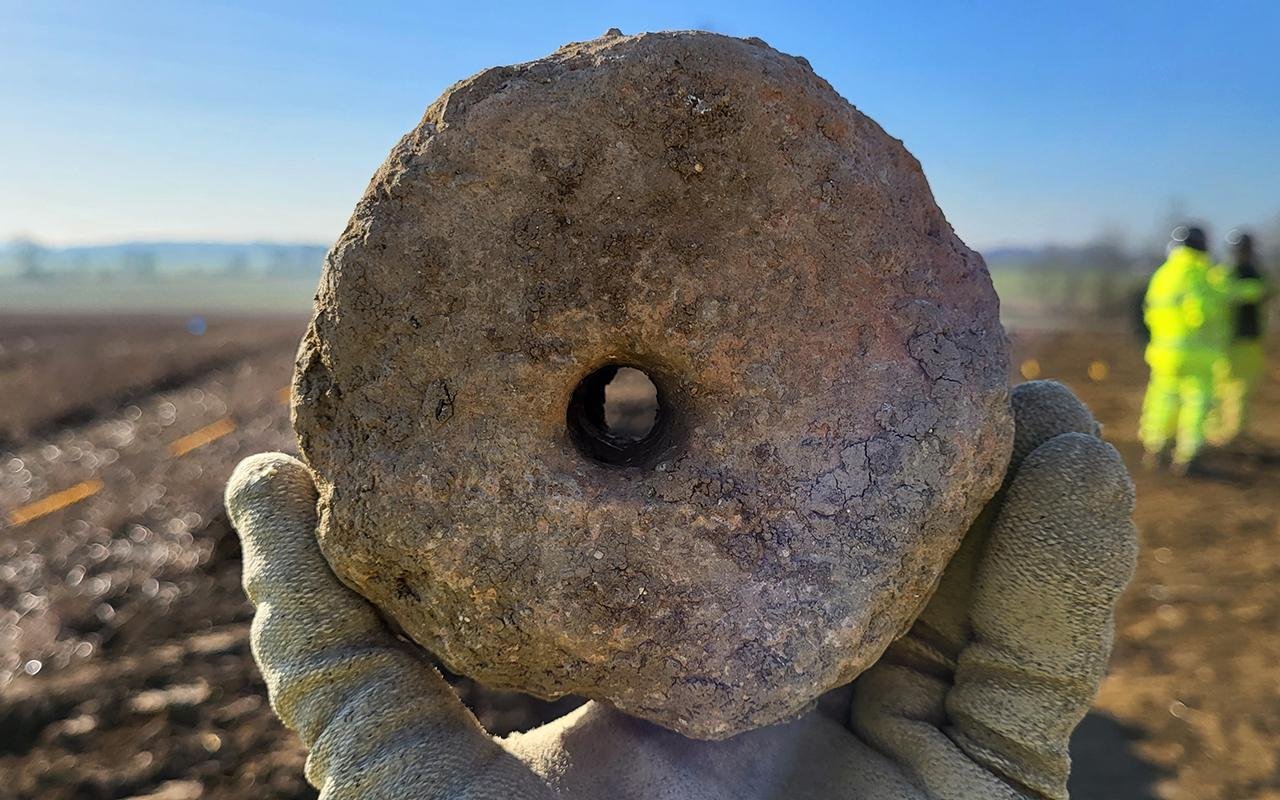Archaeologists working on the A428 Black Cat to Caxton Gibbet improvements near the Cambridgeshire-Bedfordshire border have made significant discoveries that shed light on the ancient history of the region.

The excavation, conducted in collaboration with the Museum of London Archaeology (MOLA), has unearthed artifacts from both the Iron Age (800 BCE – CE 43) and the Roman period (CE 43 – 410). The vast scale of the dig, equivalent to 89 full-sized football pitches, makes it one of the largest ever undertaken in the area.
One remarkable find is a loom weight believed to date back to the Bronze Age (2500-800 BCE). This discovery challenges previous assumptions about the area’s history, suggesting that people inhabited the region for a much longer period than originally believed. The loom weight provides insights into cloth-making practices of the time.
The archaeological site has also yielded evidence of the local consumption of luxuries during the Roman period. Pollen analysis from waterlogged soils suggests the presence of vineyards, indicating that wine might have been enjoyed in the area during Roman times. Additionally, previous excavations revealed evidence of Roman-era beer making, showcasing the varied culinary preferences of ancient inhabitants.
Roman influence is evident in the discoveries of imported goods. Amphorae, containers used to store and transport liquids, may have brought olive oil from Spain to Cambridgeshire, while the presence of expensive Samian ware from Northern France indicates the exchange of fine dinnerware through the Roman trade network.
Animal remains found at the site, such as sheep and pigs, provide valuable information about ancient diets. Furthermore, the disposal of bones and pottery in separate pits in different settlements suggests the possibility of ancient feasts.
In addition to material artifacts, archaeologists came across a Roman stylus used to write on waxed tablets, akin to modern digital tablets.

Simon Markus, MOLA Project Manager, expresses excitement about the excavation’s discoveries, emphasizing the opportunity to comprehend the entirety of an ancient landscape and the daily emergence of new findings. He also highlights the team’s dedication to sharing these discoveries with local communities in Bedfordshire and Cambridgeshire.
Lorraine Bennetts, National Highways Senior Project Manager, praises the significance of the discoveries, revealing how Bedfordshire and Cambridgeshire were well connected to other regions across Great Britain and Europe.
The team is engaging with local schools and community groups to share these finds through craft workshops and virtual presentations, allowing people to engage closely with their local history.
The excavation continues to yield valuable information, and National Highways plans to continue showcasing the discoveries and knowledge gained throughout the A428 Black Cat to Caxton Gibbet improvements project.
























